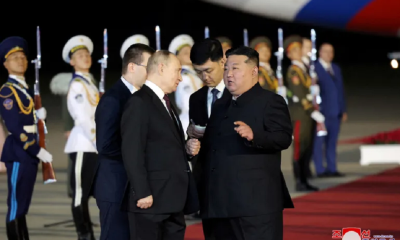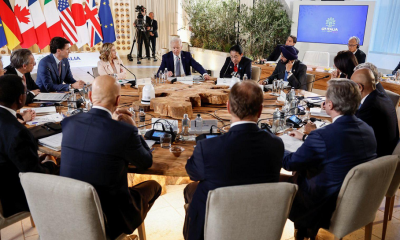Foreign News
World welcomes the New Year with fireworks and prayers
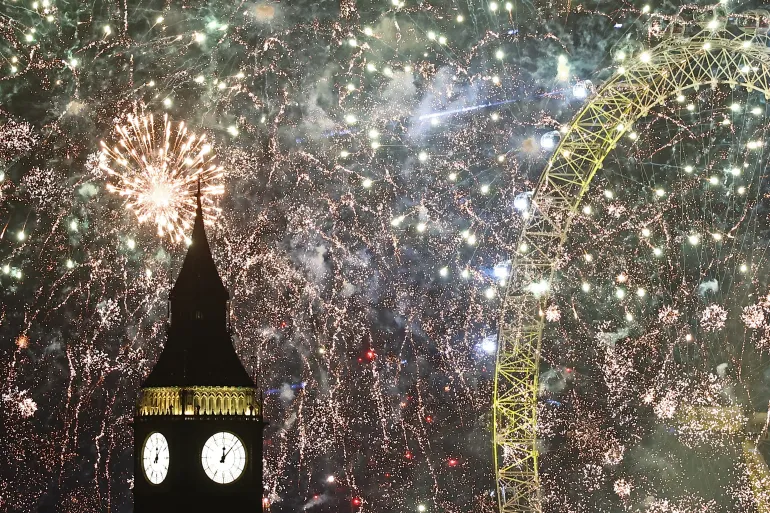
Sydney and Auckland were the first major world cities to welcome the arrival of 2024.
Over a million revellers celebrated the New Year on Sunday night amid stunning fireworks displays, illuminating the skies over Australia’s Sydney Harbour and New Zealand’s tallest structure, the Sky Tower in Auckland.
Light rain that had persisted throughout the day in Auckland had cleared by midnight, and the countdown commenced against an illuminated digital display near the top of the 328-metre (1,076-foot) communications and observation tower.
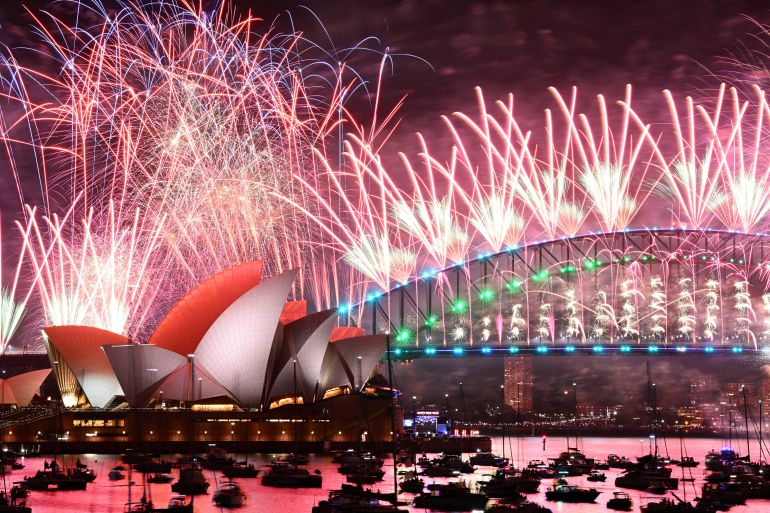
As the clock struck midnight in Australia’s largest city, Sydney, a 12-minute fireworks display erupted around the Sydney Harbour Bridge. More than one million people watched from the shore and boats in the harbour.
The small Pacific island nations of Tonga, Samoa and Kiribati had ushered in the New Year an hour earlier.
In Japan, temple bells rang out across the nation as people gathered at shrines and temples to welcome in the New Year. At the Tsukiji Temple in Tokyo, visitors were given free hot milk and corn soup as they stood in line to strike a big bell, and a pipe-organ concert was held before a majestic altar.
China celebrated the new calendar year relatively modestly, with fireworks banned in most major cities over safety and pollution concerns. During his New Year address, Chinese President Xi Jinping said that the country would focus on building momentum for economic recovery in 2024 and pledged China would “surely be reunified” with Taiwan.
In Taipei, the capital of Taiwan, an air of enthusiasm prevailed as revellers congregated for a fireworks display at the iconic Taipei 101 skyscraper. The celebration extended to concerts and various events held across the city.
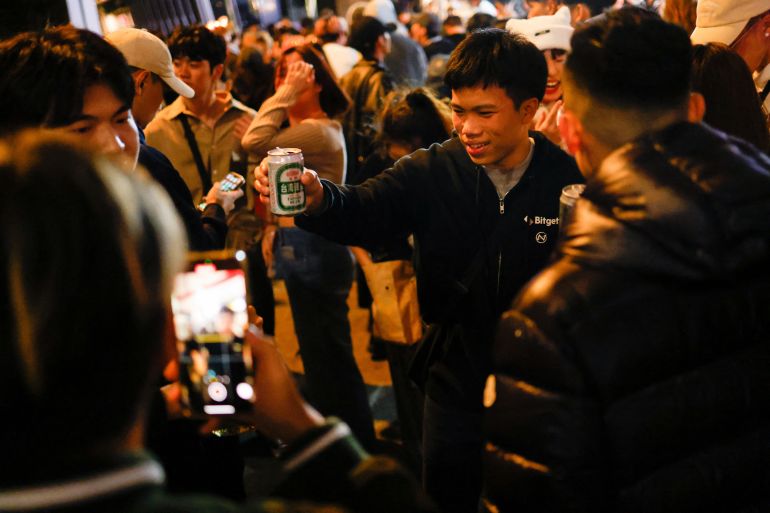
In India, thousands of revellers from the financial hub of Mumbai flocked to a bustling promenade to watch the sunset over the Arabian Sea. Meanwhile, in New Delhi, fireworks raised apprehensions about the capital, which suffers from poor air quality, being shrouded in a toxic haze on the first morning of the new year.
In London, more than 100,000 revellers gathered along the banks of the River Thames to watch the city’s annual fireworks display. The 12-minute show lit up the London Eye and Big Ben. Tens of thousands also turned out for the fireworks in Edinburgh, the Scottish capital.
End of a tense year
The New Year celebrations came against the backdrop of Israel’s war on Gaza, which has heightened tensions in some cities around the world, including Sydney, where more police than ever were deployed to oversee the fireworks displays.
The waterfront has been the scene of heated pro-Palestinian protests after the sails of the Sydney Opera House were illuminated in the colours of the Israeli flag after October 7.
Some 90,000 police and security officers were deployed around France, including along the Champs-Elysees in Paris, where large crowds took in a multidimensional light show projected onto the Arc de Triomphe showcasing the history of Paris and the sports that will feature in the 2024 Olympics.
At the Vatican, Pope Francis reflected on 2023 as a year defined by the hardships of war. In his customary Sunday blessing from a window overlooking St Peter’s Square, he extended prayers for various populations, including “the tormented Ukrainian people and the Palestinian and Israeli populations, the Sudanese people, and many others”.
In Pakistan, the government has banned all New Year’s Eve celebrations as an act of solidarity with the Palestinians. In an overnight televised message, caretaker Prime Minister Anwaar-ul-Haq Kakar urged Pakistanis to “show solidarity with the oppressed people of Gaza” by beginning the new year with simplicity.
The Palestinians in Gaza say they have little hope that 2024 will bring much relief after nearly three months of Israel’s “genocidal” military campaign that has killed nearly 22,000 people.

In Rafah on Gaza’s border with Egypt, which has become the biggest focal point for Palestinians fleeing other parts of the enclave, people were more preoccupied on Sunday with trying to find shelter, food and water than with thinking about the New Year.
“In 2024 I wish to go back to the wreckage of my home, pitch a tent and live there,” said Abu Abdullah al-Agha, a middle- aged Palestinian man whose house in Khan Younis was destroyed and who lost a young niece and nephew in an Israeli air strike.
Ukrainian President Volodymyr Zelenskyy called on his countrymen to not to lose sight of the future of their homeland amid the ongoing war in the country. “We Ukrainians know better than anyone that a better tomorrow does not come by itself because we defend each of our tomorrows with our own hands,” he said in his video address on Sunday, in which his wife Olena also appeared alongside him.
Russian President Vladimir Putin, facing an election in March, made only passing reference in his New Year address on Sunday to his war in Ukraine, hailing his soldiers as heroes but mostly emphasising unity and shared determination.

End-of-year celebrations in Russia, which usually involve fireworks and a concert on Moscow’s Red Square, were cancelled, as they were last year. After shelling in the centre of the Russian border city of Belgorod Saturday killed 24 people, some local authorities across Russia also cancelled their usual firework displays, including in the far eastern city of Vladivostok.
(Aljazeera)
Foreign News
Three rebels, one Indian soldier killed in Kashmir gun battles
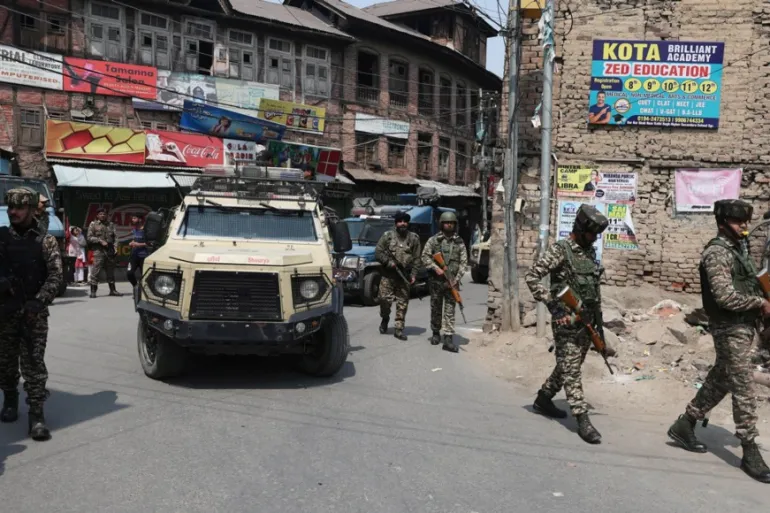
At least three suspected rebel fighters and one Indian soldier have been killed in separate firefights in Indian administered Kashmir less than a week after Interior Minister Amit Shah visited the disputed territory.
The Indian army said on Saturday that Indian soldiers killed three fighters in a gun battle that began on Wednesday in a remote forest in Kishtwar in southern Kashmir.
Senior Indian army official Brigadier JBS Rathi said troops had displayed “great tactical acumen”.
“In the gun battle, three terrorists were neutralised,” he told reporters on Saturday in a commonly used term for rebels opposed to Indian rule in Kashmir.
Weapons and “war-like stores” were recovered from the site, the army’s White Knight Corps posted on social media platform X.
A soldier was killed in a separate incident late on Friday night in Sunderbani district along the Line of Control (LoC), the de facto border that cuts Indian-administered Kashmir into two.
The White Knight Corps said on X troops had “foiled an infiltration attempt” there.
Muslim-majority Kashmir has been divided between nuclear-armed rivals India and Pakistan since their independence in 1947, with both claiming the territory in full but governing only part of it.
India has an estimated 500,000 soldiers deployed in the territory after an armed uprising against Indian rule in the late 1980s.
Thousands of people, most of them Kashmir civilians, have been killed as rebel groups have fought Indian forces, seeking independence for Kashmir or its merger with Pakistan.
In 2019, a report by the Office of the United Nations High Commissioner for Human Rights accused India of human rights violations in Kashmir and called for a commission of inquiry into the allegations. The report came nearly a year after the then UN human rights chief Zeid Ra’ad Al Husseincalled for an international investigation into abuses in the Muslim-majority region.
Last month, four police officers and two suspected rebels were killed in the region in a clash that also wounded several police officers.
The territory has simmered in anger since 2019 when Prime Minister Narendra Modi ended the region’s semi-autonomy and drastically curbed dissent, civil liberties and media freedoms while intensifying military operations.
Thousands of additional troops, including special forces, were deployed across southern mountainous areas last year following a series of deadly rebel attacks that killed more than 50 soldiers over three years.
India regularly blames Pakistan for pushing rebels across the LoC to launch attacks on Indian forces.
[Aljazeera]
Foreign News
Hundreds of flights cancelled in China as strong winds hit capital
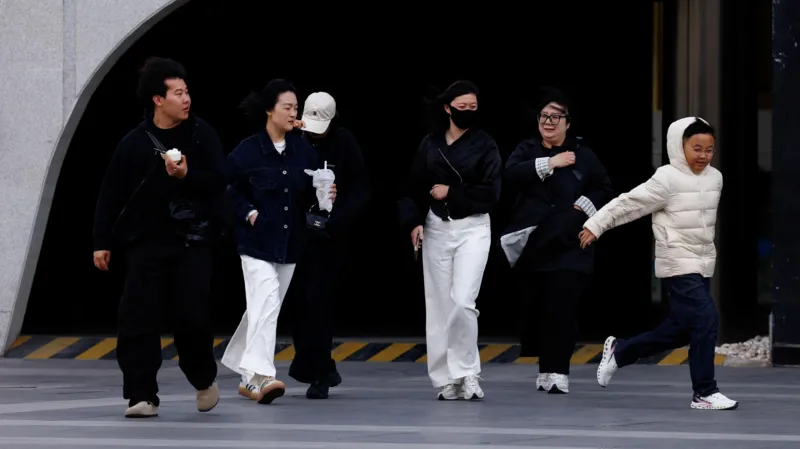
Hundreds of flights have been cancelled and trains suspended as gales hit Beijing and northern China today [Saturday].
By 11:30 local time (03:30 GMT) today, 838 flights had been cancelled at the capital’s two major airports, according to the news agency Reuters.
Wind gusts of up to 93mph (150kph) – the strongest in the Chinese capital for more than half a century – are set to continue through the weekend, forcing the closure of attractions and historic sites.
Millions were urged to stay indoors on Friday, with some state media outlets warning that people weighing less than 50kg may be “easily blown away”.
Train services, including the airport’s express subway line and some high-speed rail lines, have been suspended.
Parks were also shut, with some old trees reinforced or trimmed in preparation – but almost 300 trees have already fallen over in the capital.
A number of vehicles were damaged, but no injuries were reported. In Beijing, most residents followed authorities’ advice to stay indoors after the city warned 22 million residents to avoid non-essential travel.
“Everyone in Beijing was really nervous about it. Today there are hardly any people out on the streets. However, it wasn’t as severe as I had imagined,” a local resident told Reuters.
Meanwhile, a businessman from the Zhejiang province, near Shanghai, had his flight home cancelled.
“Because of the severe winds, all flights scheduled for last night and today were cancelled. So I will probably rebook my flight in a couple of days. I’m now basically stranded in Beijing,” he said.
The strong winds are from a cold vortex system over Mongolia and are expected to last through the weekend.
Winds bringing sand and dust from Mongolia are routine in spring, but climate change can make storms stronger and more severe.
Beijing issued its first orange alert for strong winds in a decade, with the strongest winds expected to arrive on Saturday.
China measures wind speed on a scale that goes from one to 17. A level 11 wind, according to the China Meteorological Administration, can cause “serious damage”, while a level 12 wind brings “extreme destruction”.
The winds this weekend are expected to range from level 11 to 13, with conditions expected to ease by Sunday.
[BBC]
Foreign News
US top court orders Trump to return man deported to El Salvador in ‘error’

The US Supreme Court has ordered the Trump administration to facilitate the return of a Maryland man, who was mistakenly deported to El Salvador’s notorious mega-jail.
The Trump administration had conceded that Kilmar Abrego Garcia was deported by accident, but appealed against a federal court’s order to return him to the US.
On Thursday, in a 9-0 ruling, the Supreme Court declined to block the lower court’s order.
The judge’s order “requires the Government to ‘facilitate’ Abrego Garcia’s release from custody in El Salvador and to ensure that his case is handled as it would have been had he not been improperly sent”, the justices ruled.
(BBC)
-

 Business6 days ago
Business6 days agoColombo Coffee wins coveted management awards
-

 Features7 days ago
Features7 days agoStarlink in the Global South
-

 Features2 days ago
Features2 days agoRobbers and Wreckers
-

 Features4 days ago
Features4 days agoSri Lanka’s Foreign Policy amid Geopolitical Transformations: 1990-2024 – Part III
-

 Features7 days ago
Features7 days agoModi’s Sri Lanka Sojourn
-

 Midweek Review4 days ago
Midweek Review4 days agoInequality is killing the Middle Class
-

 Features6 days ago
Features6 days agoSri Lanka’s Foreign Policy amid Geopolitical Transformations: 1990-2024 – Part I
-

 Features5 days ago
Features5 days agoA brighter future …


